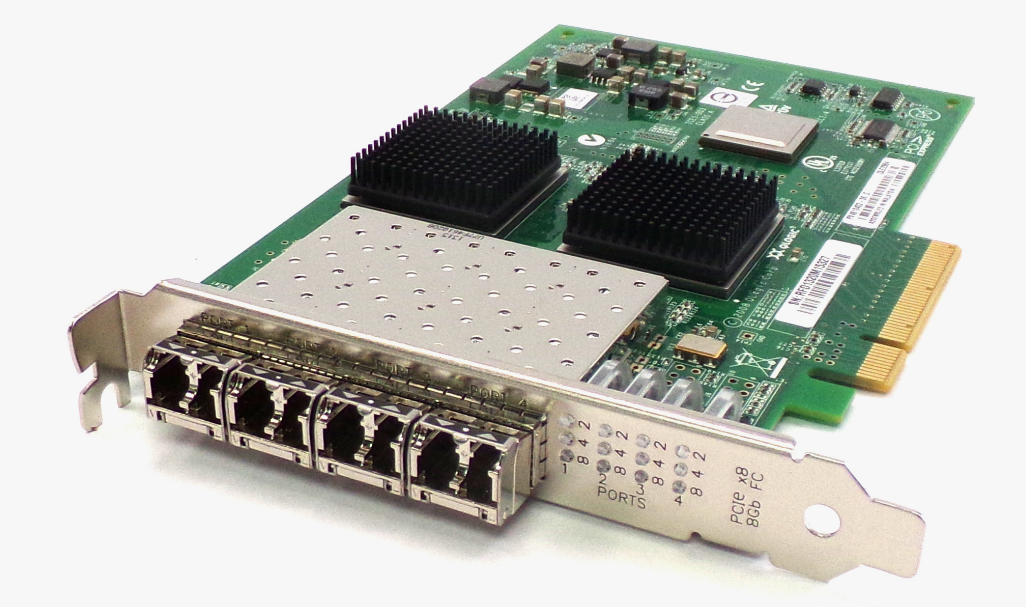Data is king; businesses are constantly looking for ways to handle and transfer vast amounts of data at lightning-fast speeds.
This is particularly true in fields like cloud computing, enterprise data storage, and real-time analytics.
One technology that has quietly but significantly impacted these domains is fiber Channel (FC). While Fiber Channel might not be as well-known as Ethernet, its role as a high-speed, low-latency data transfer solution cannot be overstated.
Cognitive Market Research projects that the size of the global fiber channel switch market in 2024 will be USD 9142.25 million. It will grow between 2024 and 2031 at a 14.20% compound annual growth rate (CAGR).
It remains the backbone of many Storage Area Networks (SANs), enabling fast, secure, and reliable data transfers that ensure systems remain efficient.
Let’s dive into why Fiber Channel is still the gold standard for high-performance data networks.
Speed, Reliability, And Performance
One of the biggest challenges in today’s data-driven world is the need for fast, efficient, and reliable data transfer. Unlike traditional Ethernet networks, which are designed for general-purpose traffic, Fiber Channel is built with high-performance data transfer in mind.
- High-Speed Data Transfer: It has been designed to support data transfer rates of up to 128 Gbps, depending on the version and infrastructure. This massive bandwidth is crucial for environments where large volumes of data need to be moved quickly—such as in data centers, cloud platforms, and virtualized environments.
- Low Latency: In industries where every millisecond matters, Fiber Channel shines. Its low-latency design ensures that data can be transferred with minimal delays, making it perfect for real-time applications. Whether you’re working with financial transactions, video streaming, or cloud computing, reducing latency can directly improve system responsiveness and overall performance.
- Consistent and Reliable: It offers a level of consistency in data transfer that is difficult to achieve with general-purpose Ethernet. This is especially important for businesses that rely on constant uptime, where network disruptions could lead to costly downtimes. Fiber Channel delivers high reliability, ensuring that large data transfers continue without interruptions.
Optimized For Storage Networks
While Ethernet serves as the standard for general network traffic, Fiber Channel has earned its place as the go-to solution for storage-related tasks. The primary use case for Fiber Channel is in Storage Area Networks (SANs), which are specialized networks that allow multiple devices to share a pool of storage resources.
With a USD 2742.68 million market size, Europe accounted for more than 30% of global revenue.
Here’s why it works so well:
- Centralized Data Storage: Fiber Channel enables organizations to set up a centralized storage system, accessible by all connected servers. This centralization makes data management more efficient and streamlined. Without Fiber Channel, each server would need to manage its own local storage, leading to inefficiency and complexity.
- Seamless Access and Data Flow: By providing a high-speed and reliable connection between storage devices and servers, Fiber Channel ensures that data can be accessed and transferred seamlessly. Whether it’s retrieving large files, running virtual machines, or managing backup processes, Fiber Channel ensures that data flow remains smooth.
- Scalability: One of the key benefits of Fiber Channel is its scalability. As businesses grow and their data needs expand, it can scale accordingly. New storage devices, servers, or switches can be easily added to the network without disrupting performance, ensuring long-term sustainability for companies’ storage infrastructures.
Security Features For Sensitive Data
In today’s world, where cyber threats are ever-present, security cannot be an afterthought. Fortunately, Fiber Channel has several built-in security features that help ensure that data remains protected.
- Dedicated Network: These channels typically operate on a dedicated network that is separate from general business traffic. This isolation provides a layer of security, as it reduces the attack surface for cybercriminals. Without shared traffic from web browsing, email, or other non-storage-related applications, the network becomes more difficult to penetrate.
- End-to-End Encryption: Many Fiber Channel systems support end-to-end encryption, ensuring that sensitive data is protected from prying eyes. Whether the data is moving between storage devices, across different locations, or between storage servers, encryption ensures that it remains secure, even if intercepted.
- Access Control: Fiber Channel networks can also incorporate robust access controls, allowing businesses to define who can access which data. This level of granularity helps prevent unauthorized access and ensures that only the right personnel or systems have access to sensitive information.
Synergy With Other Technologies
While Fiber Channel excels at providing high-speed and secure data transfer, its integration with other technologies can amplify its effectiveness.
One such example is the Intel Arc GPU, which offers significant performance improvements in data-intensive tasks that require both storage and computing capabilities.
- Enhanced Data Processing: Intel Arc GPU technology is designed to accelerate applications that involve heavy graphics processing or parallel computations. For industries like AI, machine learning, or video editing, pairing Intel GPU with Fiber Channel can ensure both efficient data storage and fast data processing. The combination helps businesses maintain high throughput without sacrificing performance in graphics-heavy applications.
- Powerful Workflows: For content creators, researchers, and professionals working in industries that need both high data throughput and graphical performance, integrating Intel GPU alongside Fiber Channel can provide a seamless experience. The GPU handles the heavy computational tasks, while the Fiber Channel ensures that data can be transferred quickly and reliably.
The Growing Role Of Fiber Channel In The Future
As technology continues to evolve, so does the role of Fiber Channel. With the rise of 5G, hybrid cloud environments, and the Internet of Things (IoT), the demand for faster, more secure data transfer will only increase.
- Cloud Integration: Hybrid cloud architectures are becoming increasingly popular. Fiber Channel is uniquely positioned to bridge on-premise storage systems with cloud services, providing fast and reliable connections between the two environments. This makes it easier for businesses to move data between local data centers and the cloud without sacrificing speed or security.
- The 5G Era: The rollout of 5G technology is expected to drastically increase the volume of data being transferred across networks. Fiber Channel’s low-latency, high-throughput capabilities make it an ideal solution for handling this surge in data, particularly in sectors like healthcare, automotive, and smart cities.
- Big Data and AI: With the increasing use of big data analytics and artificial intelligence (AI), data centers will continue to require fast, scalable, and secure solutions for managing vast datasets. Fiber Channel is well-equipped to handle the massive amounts of data generated by these technologies, ensuring that businesses can access and analyze data quickly and efficiently.
Conclusion
As data continues to grow at an unprecedented rate, the need for fast, reliable, and secure data transfer solutions is more critical than ever. Fiber Channel remains one of the most efficient and effective technologies for meeting these demands. Its high-speed, low-latency capabilities make it indispensable for managing large-scale data storage systems, and its built-in security features ensure that sensitive data remains protected.
For businesses looking to future-proof their IT infrastructure, Fiber Channel offers a scalable and secure solution that can grow with their needs. When paired with other advanced technologies, it becomes an even more powerful tool for handling both data storage and processing.
Though Fiber Channel may not grab headlines like some of the latest tech trends, its role in powering high-performance data networks cannot be overstated. It remains an essential part of modern enterprise IT environments and will continue to be the backbone of high-speed data transfer for years to come.
Read More: How to Scale Network Infrastructure with Rack Servers
















